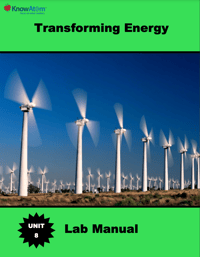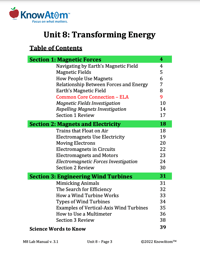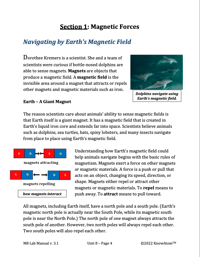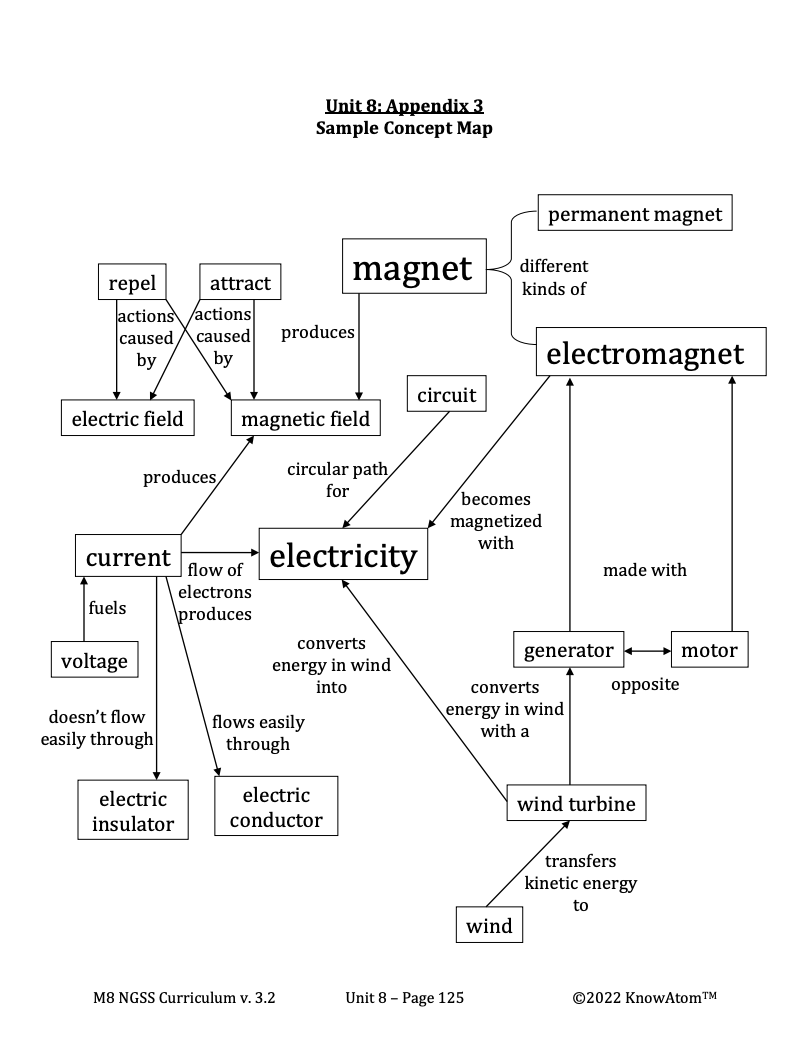In this lesson, students use springs to model longitudinal and transverse mechanical wave phenomena in an investigation into how the amplitude and frequency of seismic wave phenomena relate to how much energy the waves carry.
In this unit, students explore the science phenomena of waves and analog to digital information transfer. For the first lesson of this unit, students discover the properties of different kinds of wave phenomena. This page is a high-level extract of this lesson.
Science background gives teachers more in-depth information on the phenomena students explore. Below is an excerpt from this section on mechanical waves and energy.
P-waves are a kind of wave called a longitudinal wave because the disturbance moves parallel to the direction of the wave itself. If the wave moves from left to right, the disturbance also moves from left to right.
As longitudinal waves move through matter, molecules press together. This is called compression. When this happens, the molecules on either side of the compression spread out. This is called rarefaction.
P-waves are longitudinal because they push and pull the rock they move through. This causes the vibrating molecules to move in the same direction as the wave. This is similar to the movement of sound waves, which are also longitudinal waves. As sound waves move through a medium, the molecules of the medium collide with one another in the same direction the sound wave is moving.
S-waves are a kind of wave called a transverse wave. In these waves, the disturbance moves perpendicular to the direction of the wave itself. In other words, if the wave moves from left to right, the disturbance moves up and down. S-waves move molecules up and down, perpendicular to the direction the wave is traveling.
All waves represent repeating patterns. This can be understood by thinking about the anatomy of a simple wave. The wavelength is the distance spanned by one cycle of the motion of the wave. In transverse waves, it is measured as the distance between two crests (the top of the wave) or two troughs (the bottom of the wave). In longitudinal waves, it is measured as the distance between two compressions (points where the molecules are pressed together) or rarefactions (points where the molecules spread out).
The amplitude is a measure of the wave’s displacement from its resting position. For example, a water wave’s amplitude is its height above the water’s surface. In a longitudinal wave, the amplitude is the amount of compression that occurs as it moves through the medium. In all mechanical waves, the amplitude is proportional to the amount of energy carried. If the amplitude of a mechanical wave doubles, the wave will have four times as much energy.
The frequency of a wave is the number of waves that pass a set point in a given amount of time. A wave with a greater frequency transfers more energy in a given amount of time than a wave with a lower frequency if the amplitudes of both waves are the same.
Body waves from an earthquake have a higher frequency than surface waves, and they arrive at a seismograph before surface waves. Seismographs are instruments that detect and measure the motion of the ground, including seismic waves that result from earthquakes.
P-waves are the fastest kind of seismic wave, so they are first to reach a seismograph. They can travel through solids and liquids and often travel upward through Earth’s layers, shaking the ground in a vertical motion.
S-waves are slower than P-waves, and they can only move through solids, not liquids. Because S-waves are transverse waves, they shake the ground back and forth perpendicular to the direction the wave is moving. Surface waves have a lower frequency than either kind of body wave, and they reach the seismograph last. They move the ground in all directions, and are responsible for most of the damage caused by earthquakes.
By monitoring arrival times of seismic waves throughout the planet, scientists discovered that S-waves do not reach the opposite side of Earth after an earthquake. They concluded that there must be a liquid outer core that the S-waves couldn’t travel through.
This was an important discovery because the deepest well ever drilled was 12 kilometers. Earth’s radius is 6,370 km, so the only way to find out the details of Earth’s interior comes from monitoring seismic waves and drawing conclusions. Scientists also concluded that Earth’s crust is made of less dense matter than the mantle.
In this lesson, students use springs to model longitudinal and transverse mechanical wave phenomena in an investigation into how the amplitude and frequency of seismic wave phenomena relate to how much energy the waves carry.

Prepared hands-on materials, full year grade-specific curriculum, and personalized live professional development designed to support mastery of current state science standards.
Misconception: Waves transfer matter as they pass through a medium.
Fact: Waves transfer energy, not matter, from one place to another.
Amplitude : a measure of a wave’s displacement from its resting position
Earthquake : the shaking of the ground caused by movements within Earth’s crust that result in a sudden release of energy
Frequency : the number of waves that pass a set point in a given amount of time
Seismic waves : the waves of energy caused by the sudden breaking of rock within Earth or an explosion
Transmit : to pass on
Wave : a disturbance that travels through space and/or matter, transferring energy as it moves
Wavelength : the distance spanned by one cycle of the motion of a wave

A Surprise in Earthquake Research
A group of scientists in Southern California spent six months in 2011 listening to vibrations deep within the planet. They focused on a region in Southern California, around the Newport-Inglewood Fault. This fault stretches nearly 80 kilometers (50 miles) from Culver City to Newport Beach.
The scientists made a surprising discovery. They learned that small earthquakes occur much deeper in Earth’s interior than they thought possible. Their findings will require additional research to help them understand how this is possible. “This is a wide-open question that we don’t have a good answer to,” study co-author Asaf Inbal told Science News in 2016.
Earth’s Structure
The scientists were surprised because of the properties of Earth’s four internal layers. The inner core is Earth’s hottest layer, and is made up of a mixture of solid iron and nickel. It is surrounded by an outer core that is made up of a less dense mixture of liquid nickel and iron.
Surrounding the inner and outer core is the mantle, which is mostly molten, semi-solid rock called magma. The mantle is in constant motion, powered by the transfer of energy between Earth’s warmer and cooler materials. Earth’s crust is the hard rock layer of the planet that supports the continents and oceans. The crust is Earth’s thinnest and coolest layer.
Tectonic Plates and Earthquakes
Earth’s surface is fragmented into drifting slabs of solid rock, called tectonic plates. As magma moves beneath the crust, it pushes the tectonic plates toward or away from each other. A fault is a break in the rock where rocks on either side have moved past one another. Faults often occur where Earth’s tectonic plates meet.
When two tectonic plates suddenly slip past one another, there is a sudden release of energy that causes the ground to shake, producing earthquakes. According to some estimates, 1.3 million earthquakes occur every year. Most earthquakes are so small that we do not even feel them. Occasionally, however, the energy released by an earthquake can dramatically shake the ground. This can cause buildings to collapse, mudslides to happen, and tsunamis to form.
Energy of an Earthquake
All earthquakes occur as energy transforms from potential to kinetic energy. As the plates move, they release kinetic energy. The edges around the tectonic plates are jagged, causing them to get stuck on other plates as they move. Because magma is constantly moving below them, the rest of the plate tries to keep moving. As a result, the energy that would normally cause the plates to slide past one another transforms into stored elastic energy. When the force of the moving plates finally causes the jagged areas of the plates to separate, huge amounts of kinetic energy are released.
The earthquakes recorded by Asaf and his team were more than 30 kilometers (18 miles) deep, within Earth’s upper mantle. This was surprising to the scientists because the rocks here are so hot they should flow like hard honey when under stress, rather than accumulate stored energy.


Waves Transfer Energy
Asaf is a seismologist. Seismology is the study of earthquakes and seismic waves that move through and around Earth. Seismic waves are the waves of energy caused by the sudden breaking of rock within Earth or an explosion. All waves are disturbances that travel through space and/or matter, transferring energy as they move.
Seismic waves are similar to sound waves and water waves because they are mechanical waves, which means they are caused by vibrations in matter. As mechanical waves travel through a medium, they cause molecules within the matter to bump into each other. As this happens, energy transfers from one molecule to the next. It is important to note that waves don’t carry matter. After the energy moves through, each molecule will return to its original position.
Seismic Waves from an Earthquake
The point within Earth where the rocks start to fracture or break in an earthquake is called the focus. This is the source of the initial disturbance. The energy released travels out in all directions through seismic waves, much like ripples traveling outward when you drop a pebble in a pond. The epicenter is the location on Earth’s surface where the earthquake starts.
In this lesson students use springs to model longitudinal and transverse mechanical wave phenomena to model how the amplitude and frequency of seismic wave phenomena relate to how much energy the waves carry. Students collect and analyze investigational data on the difference between a high-amplitude wave and a low-amplitude wave, as well as between a high-frequency wave and a low-frequency wave.
KnowAtom incorporates formative and summative assessments designed to make students thinking visible for deeper student-centered learning.


Discover hands-on screens-off core science curriculum for student centered K-8 classrooms. KnowAtom supports classrooms with all hands-on materials, curriculum, and professional development to support mastery of the standards.
Standards citation: NGSS Lead States. 2013. Next Generation Science Standards: For States, By States. Washington, DC: The National Academies Press. Neither WestEd nor the lead states and partners that developed the Next Generation Science Standards were involved in the production of this product, and do not endorse it.
